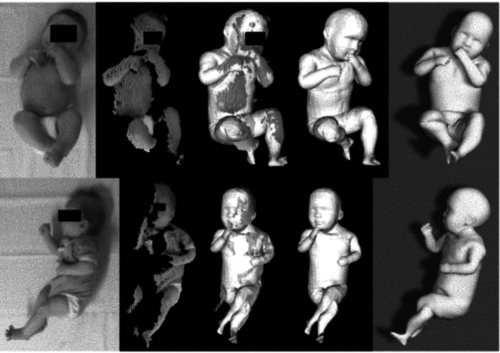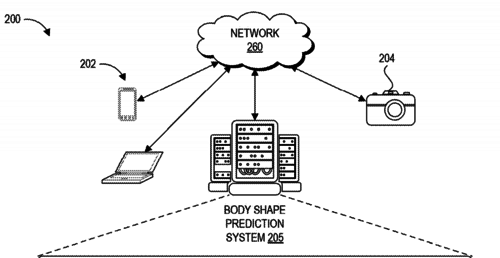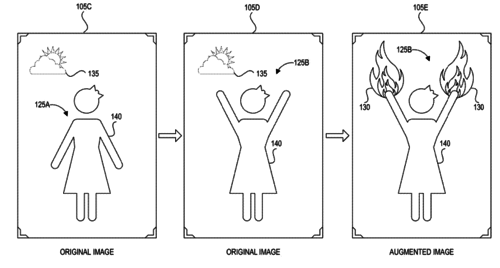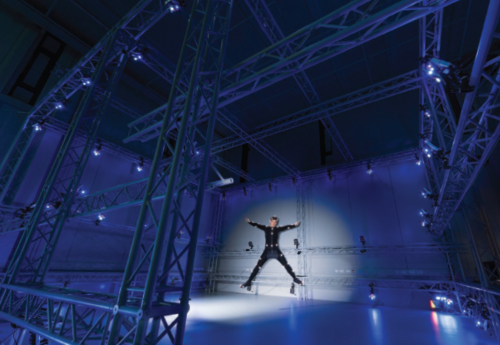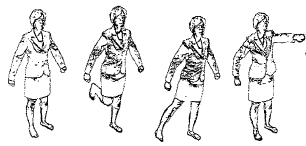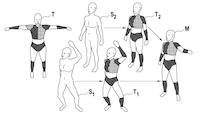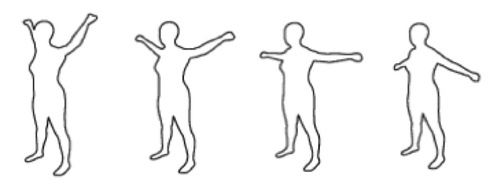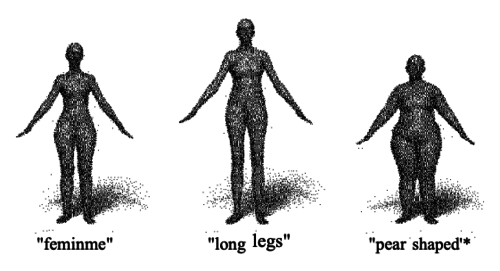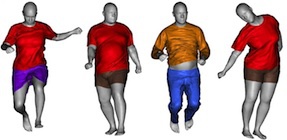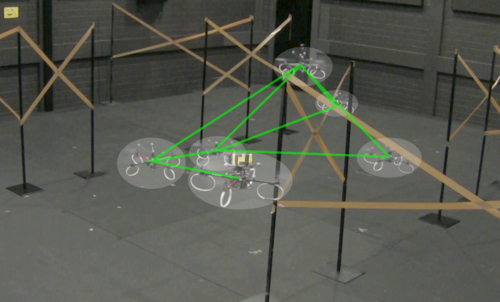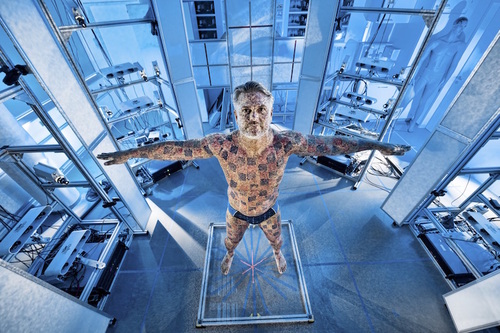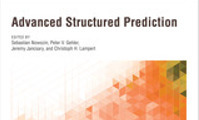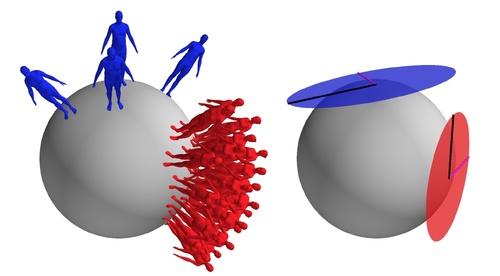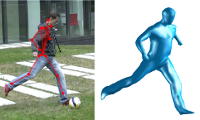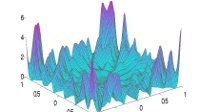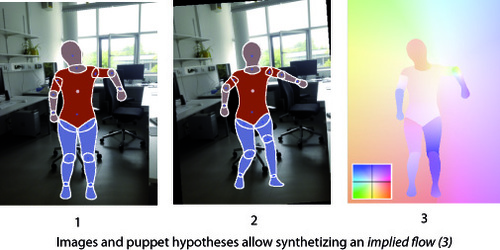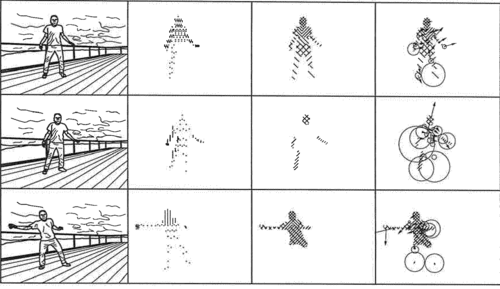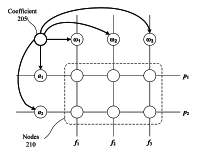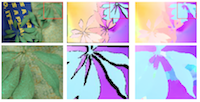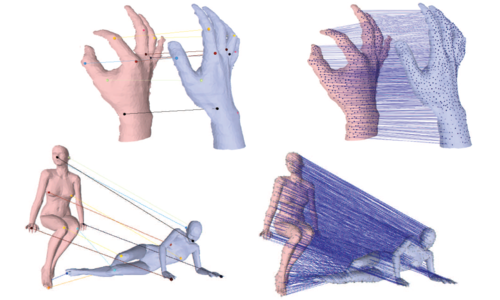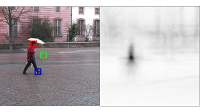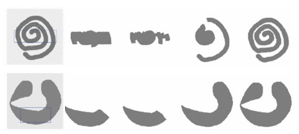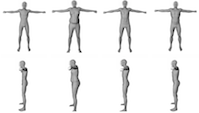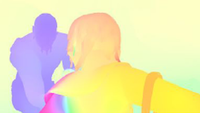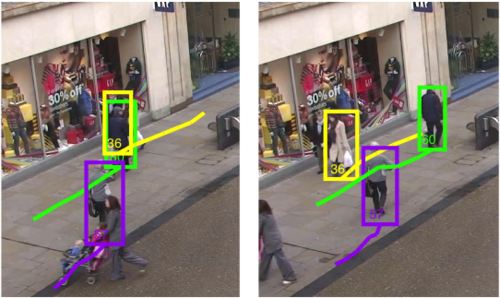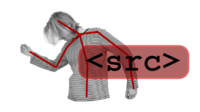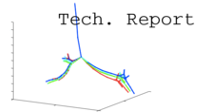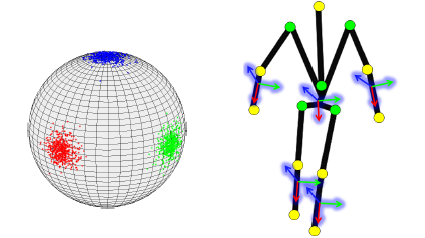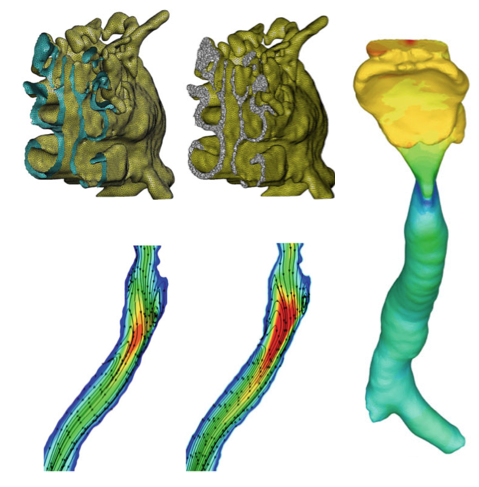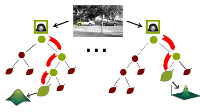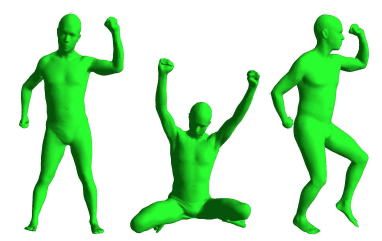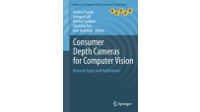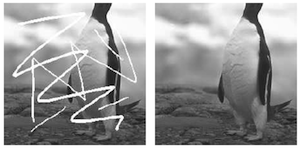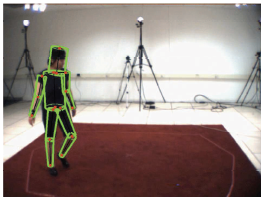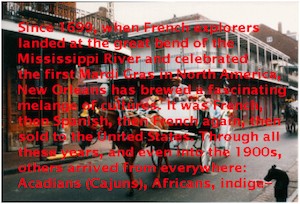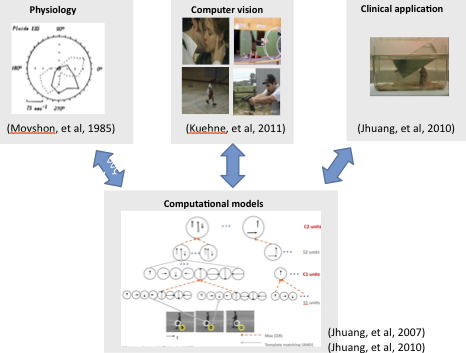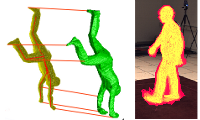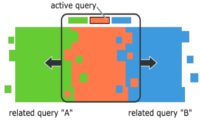2021
Skinned multi-infant linear body model
Hesse, N., Pujades, S., Romero, J., Black, M.
(US Patent 11,127,163, 2021), September 2021 (patent)
2020
Machine learning systems and methods of estimating body shape from images
Black, M., Rachlin, E., Heron, N., Loper, M., Weiss, A., Hu, K., Hinkle, T., Kristiansen, M.
(US Patent 10,679,046), June 2020 (patent)
Machine learning systems and methods for augmenting images
Black, M., Rachlin, E., Lee, E., Heron, N., Loper, M., Weiss, A., Smith, D.
(US Patent 10,529,137 B1), January 2020 (patent)
2019
Method for providing a three dimensional body model
Loper, M., Mahmood, N., Black, M.
September 2019, U.S.~Patent 10,417,818 (patent)
2018
Method and Apparatus for Estimating Body Shape
Black, M. J., Balan, A., Weiss, A., Sigal, L., Loper, M., St Clair, T.
June 2018, U.S.~Patent 10,002,460 (patent)
Co-Registration – Simultaneous Alignment and Modeling of Articulated 3D Shapes
Black, M., Hirshberg, D., Loper, M., Rachlin, E., Weiss, A.
February 2018, U.S.~Patent 9,898,848 (patent)
2017
Parameterized Model of 2D Articulated Human Shape
Black, M. J., Freifeld, O., Weiss, A., Loper, M., Guan, P.
September 2017, U.S.~Patent 9,761,060 (patent)
Crowdshaping Realistic 3D Avatars with Words
Streuber, S., Ramirez, M. Q., Black, M., Zuffi, S., O’Toole, A., Hill, M. Q., Hahn, C. A.
August 2017, Application PCT/EP2017/051954 (patent)
System and method for simulating realistic clothing
Decentralized Simultaneous Multi-target Exploration using a Connected Network of Multiple Robots
Nestmeyer, T., Robuffo Giordano, P., Bülthoff, H. H., Franchi, A.
In pages: 989-1011, Autonomous Robots, 2017 (incollection)
2016
Skinned multi-person linear model
Black, M.J., Loper, M., Mahmood, N., Pons-Moll, G., Romero, J.
December 2016, Application PCT/EP2016/064610 (patent)
2014
Advanced Structured Prediction
Nowozin, S., Gehler, P. V., Jancsary, J., Lampert, C. H.
Advanced Structured Prediction, pages: 432, Neural Information Processing Series, MIT Press, November 2014 (book)
Model transport: towards scalable transfer learning on manifolds - supplemental material
Freifeld, O., Hauberg, S., Black, M. J.
(9), April 2014 (techreport)
RoCKIn@Work in a Nutshell
Ahmad, A., Amigoni, A., Awaad, I., Berghofer, J., Bischoff, R., Bonarini, A., Dwiputra, R., Fontana, G., Hegger, F., Hochgeschwender, N., Iocchi, L., Kraetzschmar, G., Lima, P., Matteucci, M., Nardi, D., Schiaffonati, V., Schneider, S.
(FP7-ICT-601012 Revision 1.2), RoCKIn - Robot Competitions Kick Innovation in Cognitive Systems and Robotics, March 2014 (techreport)
RoCKIn@Home in a Nutshell
Ahmad, A., Amigoni, F., Awaad, I., Berghofer, J., Bischoff, R., Bonarini, A., Dwiputra, R., Fontana, G., Hegger, F., Hochgeschwender, N., Iocchi, L., Kraetzschmar, G., Lima, P., Matteucci, M., Nardi, D., Schneider, S.
(FP7-ICT-601012 Revision 0.8), RoCKIn - Robot Competitions Kick Innovation in Cognitive Systems and Robotics, March 2014 (techreport)
Human Pose Estimation from Video and Inertial Sensors
Simulated Annealing
2013
Puppet Flow
D2.1.4 RoCKIn@Work - Innovation in Mobile Industrial Manipulation Competition Design, Rule Book, and Scenario Construction
Ahmad, A., Awaad, I., Amigoni, F., Berghofer, J., Bischoff, R., Bonarini, A., Dwiputra, R., Hegger, F., Hochgeschwender, N., Iocchi, L., Kraetzschmar, G., Lima, P., Matteucci, M., Nardi, D., Schneider, S.
(FP7-ICT-601012 Revision 0.7), RoCKIn - Robot Competitions Kick Innovation in Cognitive Systems and Robotics, sep 2013 (techreport)
D2.1.1 RoCKIn@Home - A Competition for Domestic Service Robots Competition Design, Rule Book, and Scenario Construction
Ahmad, A., Awaad, I., Amigoni, F., Berghofer, J., Bischoff, R., Bonarini, A., Dwiputra, R., Hegger, F., Hochgeschwender, N., Iocchi, L., Kraetzschmar, G., Lima, P., Matteucci, M., Nardi, D., Schneider, S.
(FP7-ICT-601012 Revision 0.7), RoCKIn - Robot Competitions Kick Innovation in Cognitive Systems and Robotics, sep 2013 (techreport)
Human Pose Calculation from Optical Flow Data
D1.1 Specification of General Features of Scenarios and Robots for Benchmarking Through Competitions
Ahmad, A., Awaad, I., Amigoni, F., Berghofer, J., Bischoff, R., Bonarini, A., Dwiputra, R., Fontana, G., Hegger, F., Hochgeschwender, N., Iocchi, L., Kraetzschmar, G., Lima, P., Matteucci, M., Nardi, D., Schiaffonati, V., Schneider, S.
(FP7-ICT-601012 Revision 1.0), RoCKIn - Robot Competitions Kick Innovation in Cognitive Systems and Robotics, July 2013 (techreport)
SocRob-MSL 2013 Team Description Paper for Middle Sized League
Messias, J., Ahmad, A., Reis, J., Serafim, M., Lima, P.
17th Annual RoboCup International Symposium 2013, July 2013 (techreport)
System and method for generating bilinear spatiotemporal basis models
Matthews, I. A. I. S. T. S. K. S. Y.
US Patent Application 13/425,369, March 2013 (patent)
A Quantitative Analysis of Current Practices in Optical Flow Estimation and the Principles Behind Them
Sun, D., Roth, S., Black, M. J.
(CS-10-03), Brown University, Department of Computer Science, January 2013 (techreport)
Modeling Shapes with Higher-Order Graphs: Theory and Applications
Wang, C., Zeng, Y., Samaras, D., Paragios, N.
In Shape Perception in Human and Computer Vision: An Interdisciplinary Perspective, (Editors: Zygmunt Pizlo and Sven Dickinson), Springer, 2013 (incollection)
Class-Specific Hough Forests for Object Detection
Gall, J., Lempitsky, V.
In Decision Forests for Computer Vision and Medical Image Analysis, pages: 143-157, 11, (Editors: Criminisi, A. and Shotton, J.), Springer, 2013 (incollection)
Image Gradient Based Level Set Methods in 2D and 3D
Xianhua Xie, Si Yong Yeo, Majid Mirmehdi, Igor Sazonov, Perumal Nithiarasu
In Deformation Models: Tracking, Animation and Applications, pages: 101-120, 0, (Editors: Manuel González Hidalgo and Arnau Mir Torres and Javier Varona Gómez), Springer, 2013 (inbook)
2012
Coregistration: Supplemental Material
Lie Bodies: A Manifold Representation of 3D Human Shape. Supplemental Material
MPI-Sintel Optical Flow Benchmark: Supplemental Material
Exploiting pedestrian interaction via global optimization and social behaviors
Leal-Taixé, L., Pons-Moll, G., Rosenhahn, B.
In Theoretic Foundations of Computer Vision: Outdoor and Large-Scale Real-World Scene Analysis, Springer, April 2012 (incollection)
HUMIM Software for Articulated Tracking
Soren Hauberg, Kim S. Pedersen
(01/2012), Department of Computer Science, University of Copenhagen, January 2012 (techreport)
A geometric framework for statistics on trees
Aasa Feragen, Mads Nielsen, Soren Hauberg, Pechin Lo, Marleen de Bruijne, Francois Lauze
(11/02), Department of Computer Science, University of Copenhagen, January 2012 (techreport)
Data-driven Manifolds for Outdoor Motion Capture
Pons-Moll, G., Leal-Taix’e, L., Gall, J., Rosenhahn, B.
In Outdoor and Large-Scale Real-World Scene Analysis, 7474, pages: 305-328, LNCS, (Editors: Dellaert, Frank and Frahm, Jan-Michael and Pollefeys, Marc and Rosenhahn, Bodo and Leal-Taix’e, Laura), Springer, 2012 (incollection)
Scan-Based Flow Modelling in Human Upper Airways
Perumal Nithiarasu, Igor Sazonov, Si Yong Yeo
In Patient-Specific Modeling in Tomorrow’s Medicine, pages: 241 - 280, 0, (Editors: Amit Gefen), Springer, 2012 (inbook)
An Introduction to Random Forests for Multi-class Object Detection
Gall, J., Razavi, N., van Gool, L.
In Outdoor and Large-Scale Real-World Scene Analysis, 7474, pages: 243-263, LNCS, (Editors: Dellaert, Frank and Frahm, Jan-Michael and Pollefeys, Marc and Rosenhahn, Bodo and Leal-Taix’e, Laura), Springer, 2012 (incollection)
Home 3D body scans from noisy image and range data
Weiss, A., Hirshberg, D., Black, M. J.
In Consumer Depth Cameras for Computer Vision: Research Topics and Applications, pages: 99-118, 6, (Editors: Andrea Fossati and Juergen Gall and Helmut Grabner and Xiaofeng Ren and Kurt Konolige), Springer-Verlag, 2012 (incollection)
Consumer Depth Cameras for Computer Vision - Research Topics and Applications
Fossati, A., Gall, J., Grabner, H., Ren, X., Konolige, K.
Advances in Computer Vision and Pattern Recognition, Springer, 2012 (book)
2011
ISocRob-MSL 2011 Team Description Paper for Middle Sized League
Messias, J., Ahmad, A., Reis, J., Sousa, J., Lima, P.
15th Annual RoboCup International Symposium 2011, July 2011 (techreport)
Steerable random fields for image restoration and inpainting
Roth, S., Black, M. J.
In Markov Random Fields for Vision and Image Processing, pages: 377-387, (Editors: Blake, A. and Kohli, P. and Rother, C.), MIT Press, 2011 (incollection)
Benchmark datasets for pose estimation and tracking
Andriluka, M., Sigal, L., Black, M. J.
In Visual Analysis of Humans: Looking at People, pages: 253-274, (Editors: Moesland and Hilton and Kr"uger and Sigal), Springer-Verlag, London, 2011 (incollection)
Fields of experts
Roth, S., Black, M. J.
In Markov Random Fields for Vision and Image Processing, pages: 297-310, (Editors: Blake, A. and Kohli, P. and Rother, C.), MIT Press, 2011 (incollection)
Model-Based Pose Estimation
Pons-Moll, G., Rosenhahn, B.
In Visual Analysis of Humans: Looking at People, pages: 139-170, 9, (Editors: T. Moeslund, A. Hilton, V. Krueger, L. Sigal), Springer, 2011 (inbook)
2010
ImageFlow: Streaming Image Search
Jampani, V., Ramos, G., Drucker, S.
MSR-TR-2010-148, Microsoft Research, Redmond, 2010 (techreport)
2009
ISocRob-MSL 2009 Team Description Paper for Middle Sized League
Lima, P., Santos, J., Estilita, J., Barbosa, M., Ahmad, A., Carreira, J.
13th Annual RoboCup International Symposium 2009, July 2009 (techreport)
An introduction to Kernel Learning Algorithms

